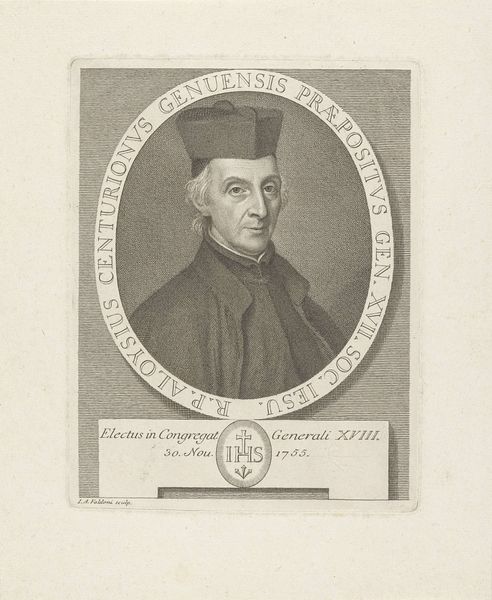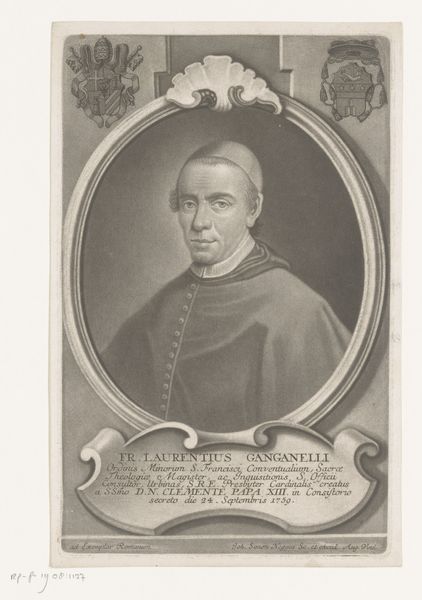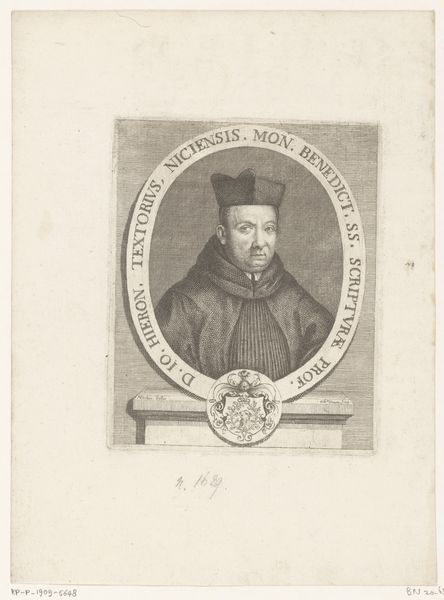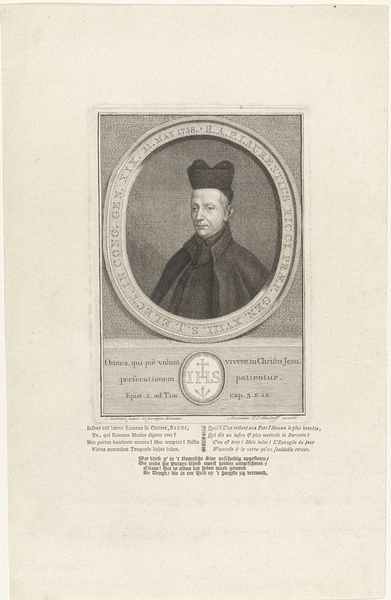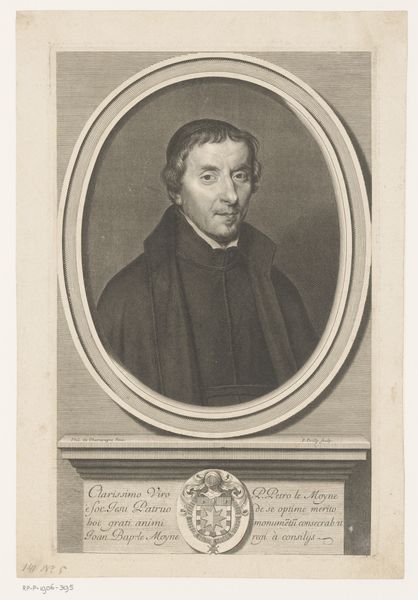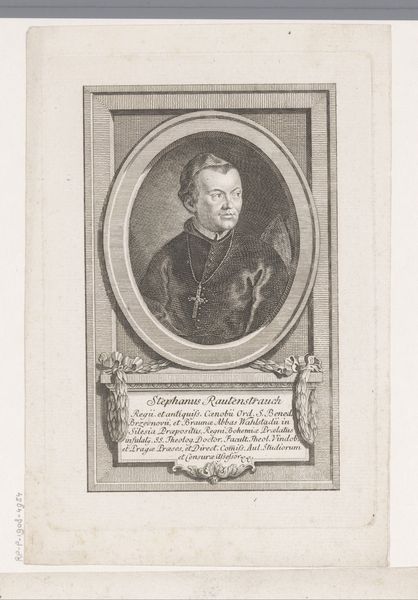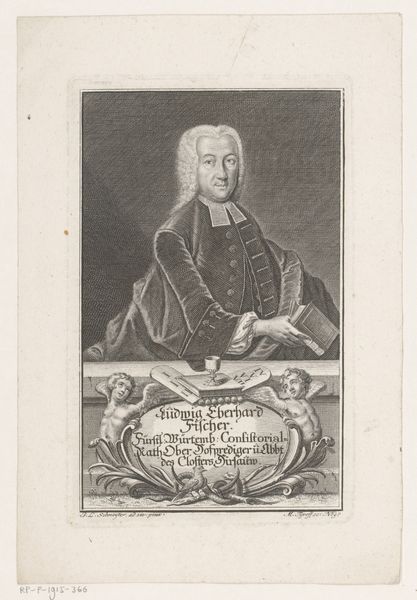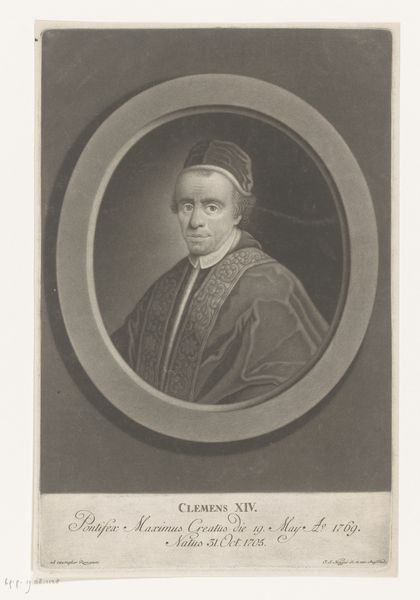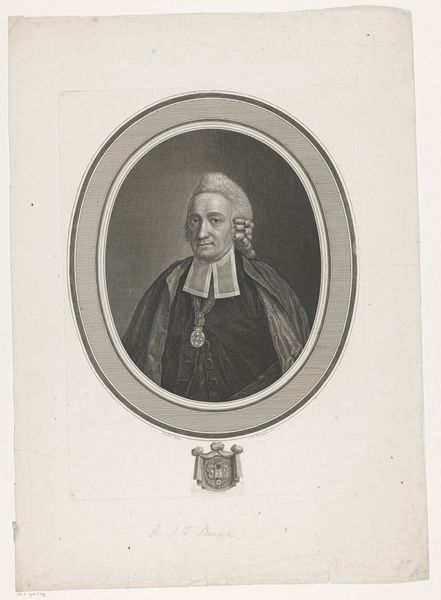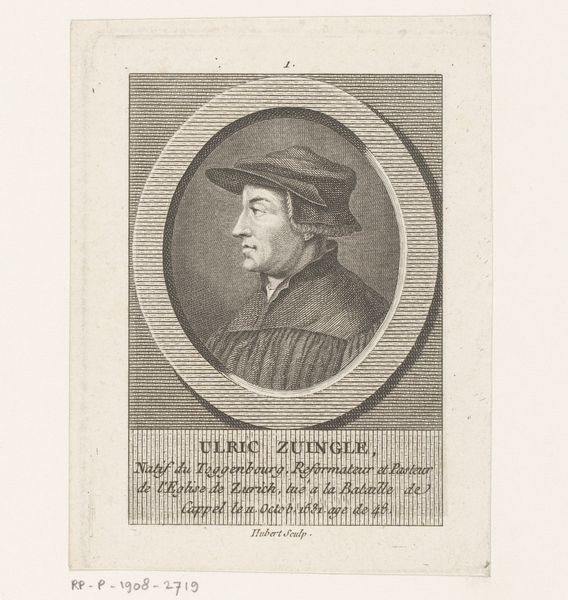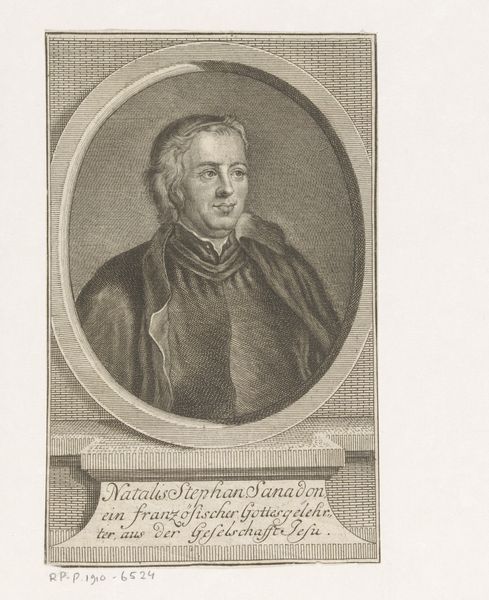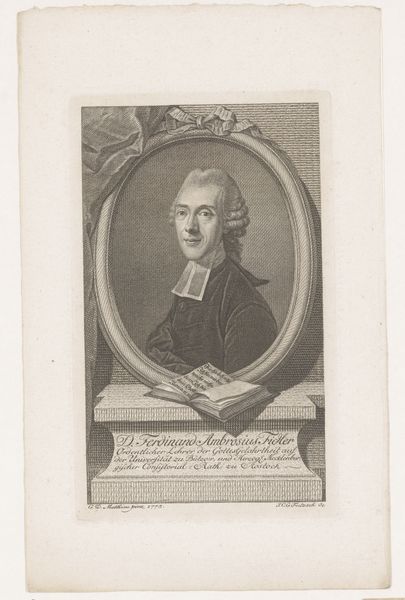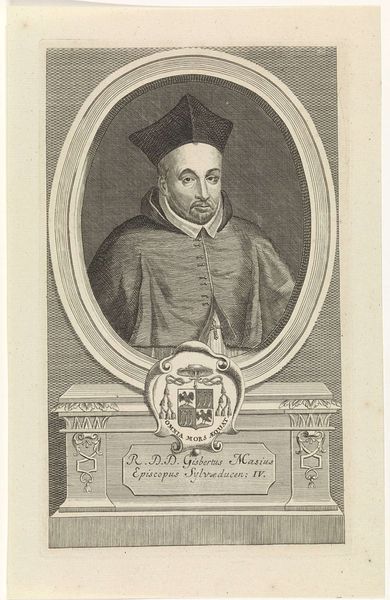
Dimensions: height 249 mm, width 155 mm
Copyright: Rijks Museum: Open Domain
Curator: Ah, the severity of monochrome! What a stark portrait. He has kind eyes, though. Doesn't he? Editor: That's Johann Simon Negges' "Portret van Laurentius Ricci," dating sometime between 1736 and 1792. It's an engraving, offering insight into how powerful figures presented themselves in print during the Baroque era. I'm drawn to its institutional context. Curator: "Powerful figure" indeed! But, honestly, he just looks weary to me. The weight of the cloth around his shoulders… the high collar… It feels oppressive. Almost a shadow box. Editor: Absolutely. Ricci was the eighteenth Superior General of the Society of Jesus, a position burdened with the controversies and suppressions of the Jesuit order during that period. It reflects a deliberate construction of authority and piety, disseminated widely via print. Think of it as propaganda. Curator: You see politics; I see humanity, trapped. The subtle etching gives him this ephemeral, ghostlike quality. Is that intentional? Or am I just projecting? Editor: Both, I suspect. Engravings served a practical purpose, replicating images for mass consumption and solidifying reputations. But that ghostly quality, as you call it, also subtly acknowledges the precarious position the Jesuits found themselves in during Ricci's tenure. The visual language speaks of both power and vulnerability. Curator: Vulnerability. Yes! The barest suggestion of a smile fights to emerge, but it doesn't quite reach his eyes. There's so much implied sadness… even the formal framing feels like a cage. Editor: Right, it highlights the tensions of religious authority during a time of intense political upheaval, how identity becomes performative and how portraits function as objects of power. Curator: A compelling study in contrasts, then. On the surface, authority. Look deeper, and there's so much turmoil implied! Editor: Precisely. Negges' work reminds us that art often served very specific, politically charged functions in the public sphere. Curator: Even wrapped in artistry, there’s always something political that lies just below.
Comments
No comments
Be the first to comment and join the conversation on the ultimate creative platform.
